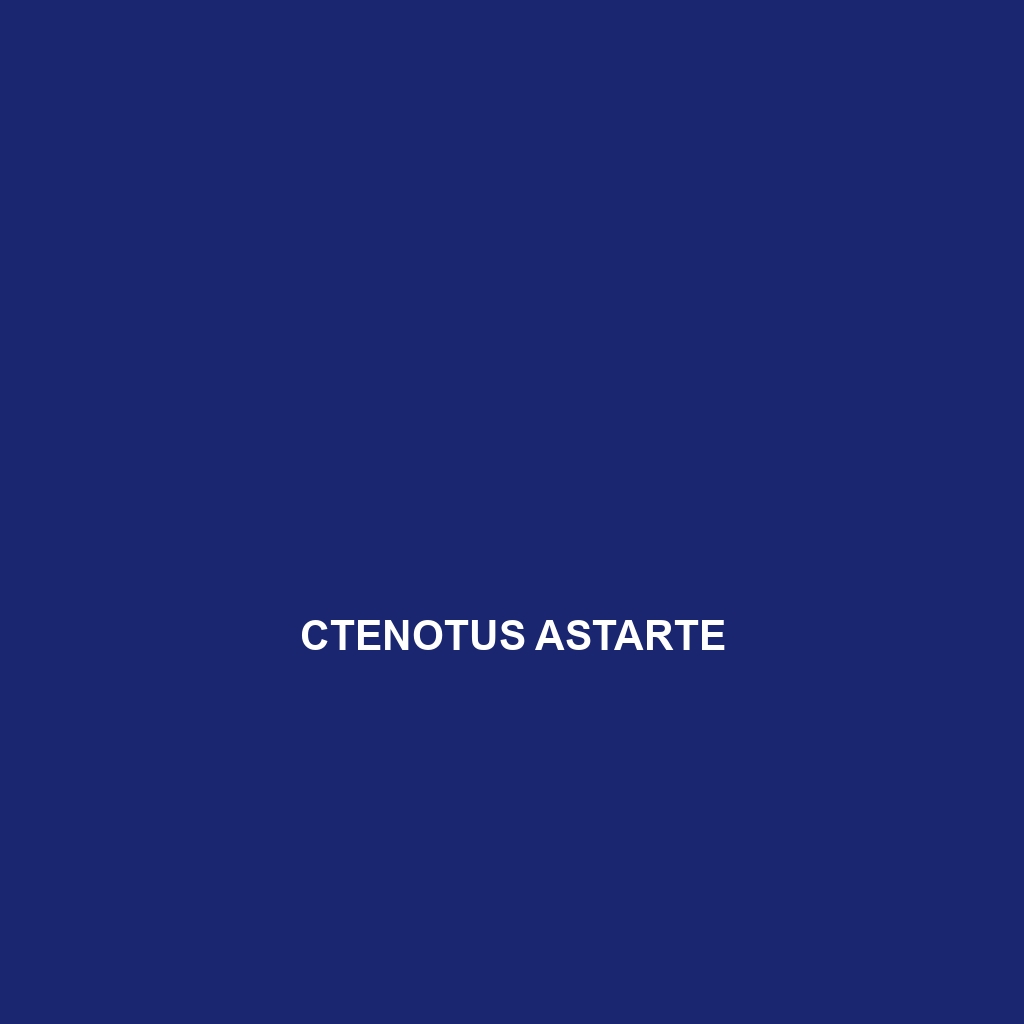Discover the Yellow-Footed Ctenotus (Ctenotus calurus), a medium-sized Australian skink known for its distinctive yellow or orange feet and smooth, striped body. Found in arid habitats, this agile predator primarily feeds on insects and plays a critical role in maintaining ecological balance.
Category: Uncategorized
Ctenotus brooksi
Ctenotus brooksi, commonly known as Brook's Ctenotus, is a medium-sized skink native to arid regions of southern Australia, thriving in open woodlands and grasslands. This agile, insectivorous species showcases sandy-brown to greyish coloration with distinctive stripes, plays a crucial ecological role by controlling insect populations, and exhibits remarkable adaptability to varying environmental conditions.
Ctenotus burbidgei
Ctenotus burbidgei, or Burbidge's Ctenotus, is a slender lizard native to the arid regions of Western Australia, measuring 10 to 15 cm with light brown coloration and darker stripes for camouflage. This diurnal species plays a crucial ecological role as a predator of insects and is known for its ability to regenerate its tail.
Ctenotus brachyonyx
Ctenotus brachyonyx, commonly known as the short-tailed skink, is a medium-sized Australian lizard that thrives in semi-arid scrublands and grasslands, exhibiting distinctive brown or gray coloration and a short, rounded tail. This active, diurnal species primarily feeds on small invertebrates and plays a crucial role in its ecosystem by controlling pest populations.
Ctenotus brevipes
Ctenotus brevipes is a diurnal lizard native to the arid regions of Australia, known for its agility and distinctive brown and grey coloration with dark stripes. This insectivorous species thrives in sandy grasslands and plays a vital role in maintaining ecological balance by controlling insect populations.
Ctenotus australis
Ctenotus australis, or the Australian Ctenotus, is a diurnal lizard measuring 15 to 25 cm, characterized by its elongated body and distinctive striped pattern. Thriving in arid regions, it feeds on insects and plays a vital role in its ecosystem by regulating insect populations and improving soil health through its burrowing habits.
Ctenotus borealis
Ctenotus borealis, commonly found in the arid regions of Australia, is a slender skink known for its distinctive dark stripes and large foxy-shaped head. This diurnal insectivore thrives in sandy soils and plays a vital role in its ecosystem by controlling insect populations and serving as prey for larger predators.
Ctenotus atlas
The Ctenotus atlas, also known as the Centralian Ctenotus, is a medium-sized skink native to arid regions of central and western Australia, characterized by its elongated body, sandy to light brown coloration with dark stripes, and large eyes. This diurnal species plays a crucial role in its ecosystem by controlling insect populations and serves as a vital food source for larger predators.
Ctenotus astictus
Discover the Ctenotus astictus, a small Australian skink renowned for its distinctive brown, gray, and cream patterned body, reaching lengths of 8 to 12 centimeters. This agile, diurnal species thrives in arid woodlands, preying primarily on insects while playing a crucial role in its ecosystem as both predator and prey.
Ctenotus astarte
Discover the Ctenotus astarte, a medium-sized skink native to southeastern Australia, known for its vibrant coloration and distinctive striped pattern. Thriving in open woodlands and grasslands, this diurnal species plays a vital role in its ecosystem by controlling insect populations and serving as prey for larger animals.






